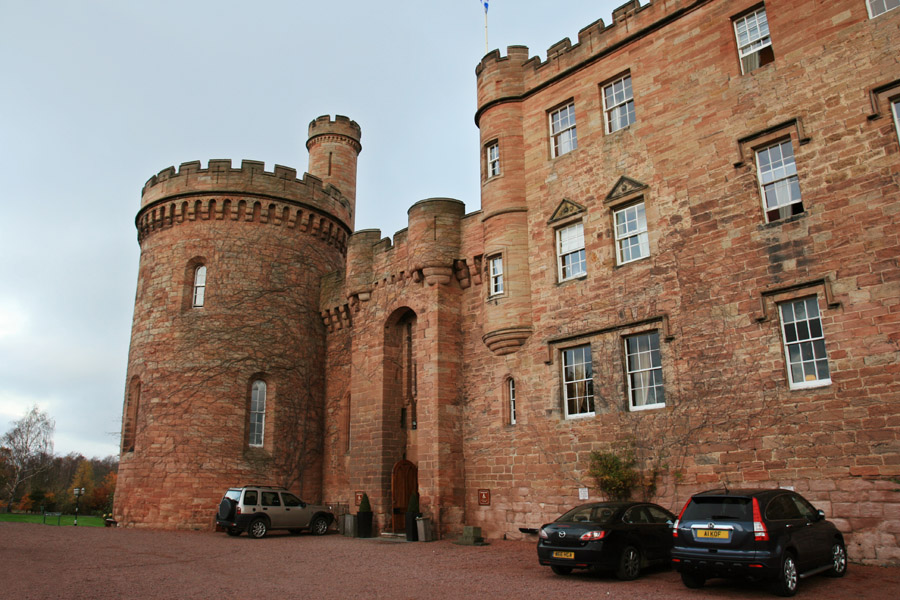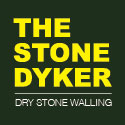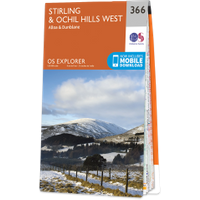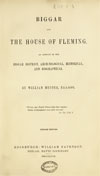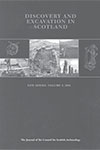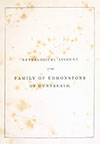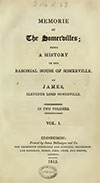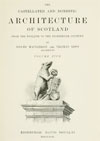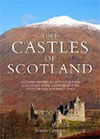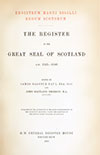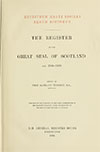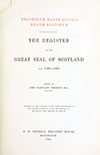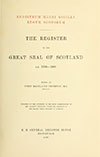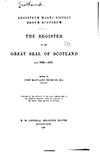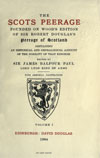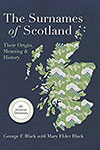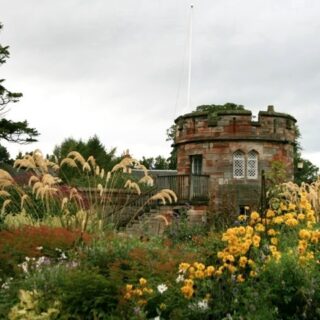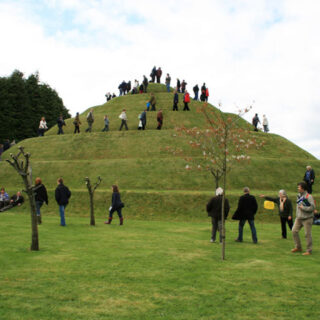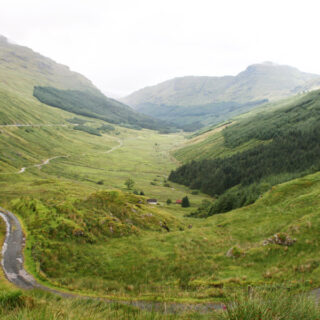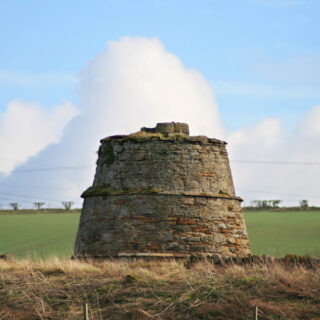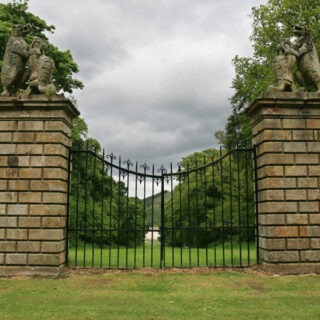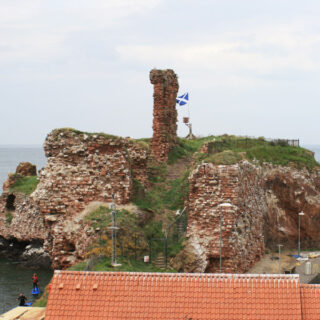

David MacGibbon and Thomas Ross, Edinburgh, 1892
The High House of Edmonston is a ruined 15th century tower that may have replaced an earlier castle.
Little is known about the family history of the tower. It is thought to have originally belonged to a junior branch of the Edmonstones of Edmonstone in Midlothian, but this may be antiquarian speculation rather than fact. A Baldewyn de Edmeiston, or Haldwine of Edmonston, in Lanarkshire paid homage to Edward I of England in 1296.
In 1322 Haldwine’s son and heir, William of Edmonston, resigned the lands of Edmonston and Candy in Lanarkshire to Sir James Douglas, with the consent of the superior, Gilbert Fleming of Biggar, the Douglases then owning Edmonston until the mid-17th century.
The tower is though to date from the mid-15th century. Standing on rising ground to the west of the Candy Burn it is almost square in plan, measuring around 7.9m north-east to south-west by around 7.3m across with walls some 1.2m thick. Consisting of three storeys, the walls still survive to the wall head at around 8.2m tall on the north-west and south-east sides, most of the south-west walls having been destroyed in 1872. The tower originally had crowstepped gables, a small section of which survives on the south-west wall, and was rubble-built with some dressed stones.
A circular tower projects from the north-east corner of the north-west wall, containing an ant-clockwise spiral staircase, with the entrance in the re-entrant angle to the west. The entrance doorway leads into a small lobby with a door to the left opening into the stair and a door straight ahead leading into the vaulted ground floor chamber. In the wall between the lobby and the chamber is a small slit window. The ground floor chamber features a shot-hole in the south-east wall and a slit window high up in the north-east wall looking across the courtyard entrance, more of which later.
The first floor housed the great hall, lit by one window in the north-east wall overlooking the courtyard entrance and two in the south-east wall. Within the south-west wall of the hall is a small cupboard and on this wall there was once also a fireplace with carved jambs, one of which fell due to inclement weather in the winter of 1889-90. What has been interpreted as a doorway into the hall is located immediately to the east of the door from the stair tower and directly above the entrance at ground floor level, with only hints left due to the damage to the south-west walls. This would be a slightly strange arrangement so it’s tempting to speculate that it may actually have been a window seat.
On the second floor was a room with two windows above those of the hall below in the south-east wall, a small window and fireplace in the north-east wall, and a large cupboard in the south-west wall.
Projecting around 6.1m from the north-east wall of the tower is a section of walling containing an entrance gateway with a semi-circular headed archway, attached to the east of which is part of a small square tower with a window at first floor level. The arch gave access to a cobbled courtyard within which was another building that was demolished in 1815 during the construction of the nearby Edmonston House.
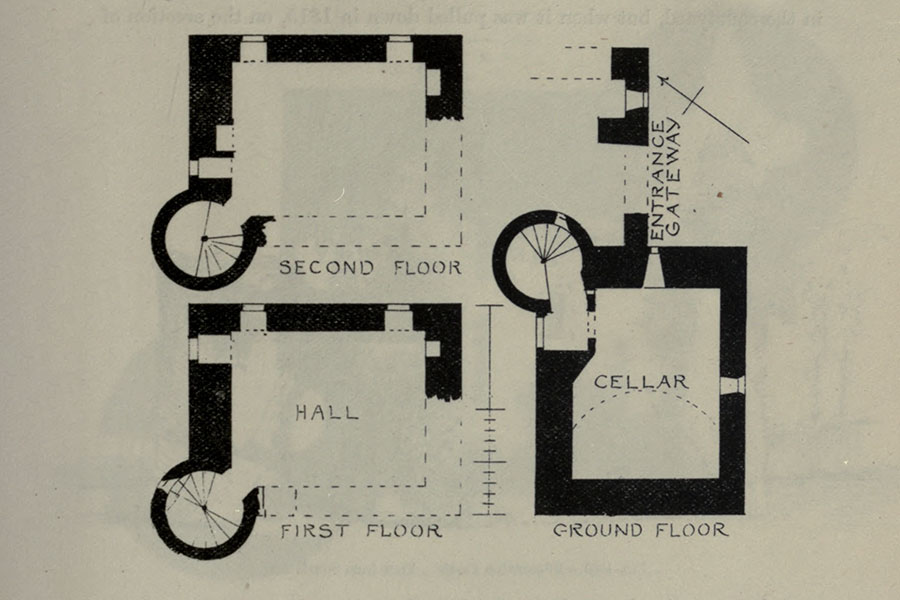
David MacGibbon and Thomas Ross, Edinburgh, 1892
To the north-east of the tower there is a slight ditch and bank, running approximately north-west to south-east.
The castle is mentioned in 1540 when James V made a new grant of numerous properties to Robert Douglas of Lochlevin, including the lands and barony of Edmestoun with its manor and fortalice. The Flemings must have retained the superiority as in 1573 they were granted to a James Millar due to the forfeiture of John, Lord Fleming.
The tower is said to have been complete until 1872 when it was blown up with dynamite, the owner being concerned about it collapsing due to its deteriorating condition, causing much of the south-west walls to fall.
Alternative names for High House of Edmonston
Eastmonstone; Edmanstoun; Edmeiston; Edmeston; Edmestoun; Edmistoun; Edmistoune; Edmonston Castle; Edmonston High House; Edmonstone; Edmondstoun; Edmondstoune; High House
